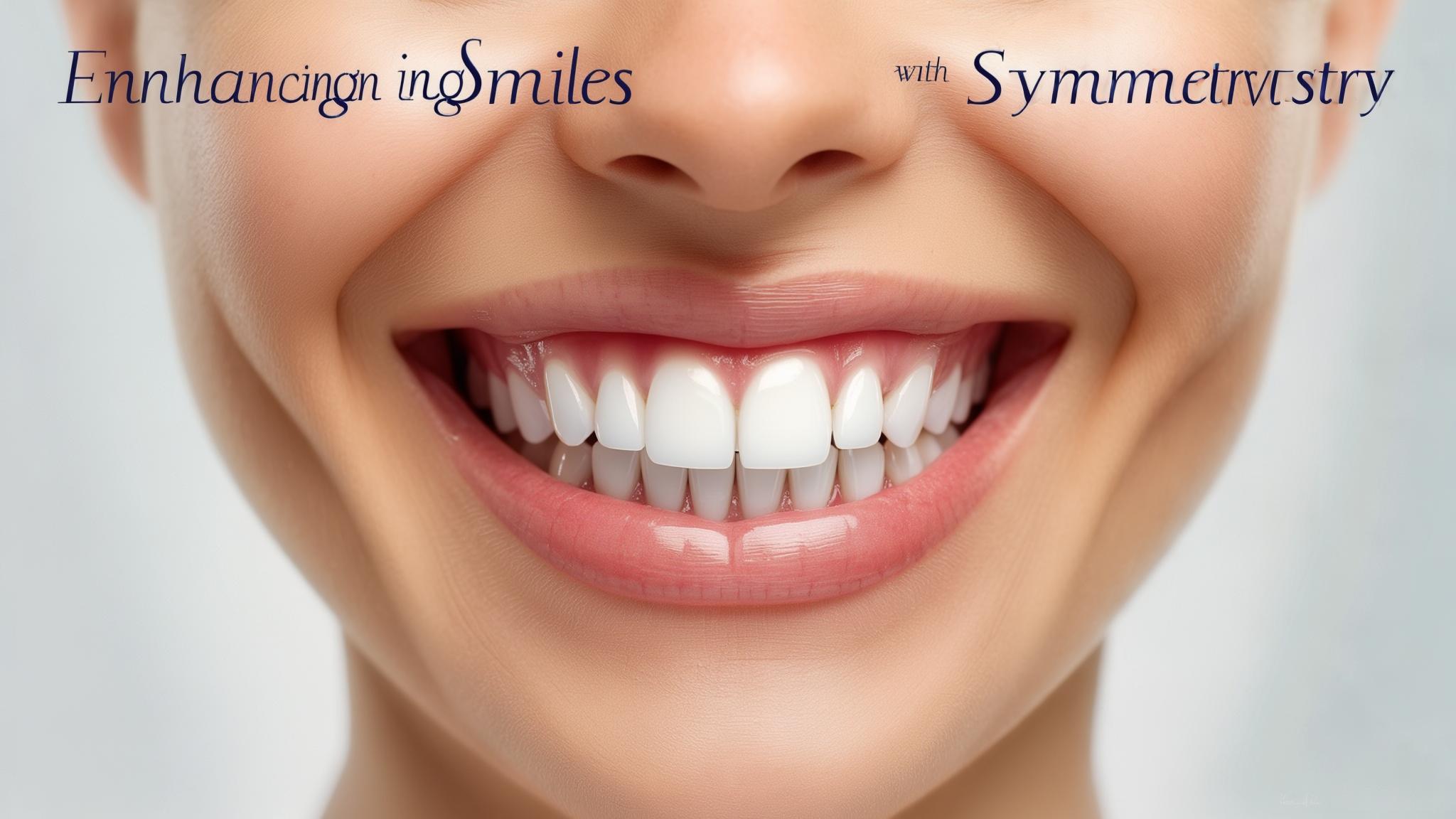Introduction
Cosmetic dentistry is a fascinating field that focuses on improving the appearance of a person's teeth, gums, and overall smile. While traditional dentistry aims to maintain oral health, cosmetic dentistry elevates it by addressing aesthetic concerns. This branch of dentistry has gained popularity as more people recognize the importance of a beautiful smile in boosting self-confidence and enhancing social interactions.
One of the key concepts in cosmetic dentistry is smile symmetry. A well-balanced smile is often seen as more attractive and harmonious. Additionally, the Golden Ratio, a mathematical principle found throughout nature and art, plays a significant role in achieving aesthetic balance in smiles.
Understanding Smile Symmetry
Smile symmetry refers to the balance and proportion of the elements that make up your smile. When we talk about symmetry, we're looking at how well these elements are aligned and proportioned on both sides of your face.
There are two main types of symmetry in smiles:
- Vertical symmetry: This involves the alignment of your facial features, such as your eyes, nose, and mouth, along a vertical axis.
- Horizontal symmetry: This refers to the balance between the left and right sides of your smile.
A symmetrical smile can have a profound psychological impact. Studies show that people often perceive symmetrical faces as more attractive, trustworthy, and approachable.
The Golden Ratio in Aesthetics
The Golden Ratio, approximately 1.618, is a mathematical ratio that appears in various forms in nature, art, and architecture. It's often symbolized by the Greek letter Phi (Φ). This ratio has been used by artists like Leonardo da Vinci to create visually pleasing compositions.
In terms of facial aesthetics, the Golden Ratio can help create harmony and balance. For example, the width of the mouth compared to the width of the nose often aligns with this ratio, contributing to what many perceive as an ideal smile.
The Role of Proportions in Aesthetic Dentistry
Achieving a balanced smile involves paying attention to dental proportions. Here are some key factors:
- Tooth size and shape: Teeth should complement the size and shape of the face.
- Gum line contour: A balanced gum line enhances the symmetry of a smile.
- Lip position: Lips frame the teeth and should align well with the smile.
Case studies in cosmetic dentistry often highlight how adjusting these proportions can transform a smile, enhancing both symmetry and aesthetic appeal.
Techniques in Cosmetic Dentistry for Achieving Symmetry
Several techniques in cosmetic dentistry can help achieve smile symmetry:
- Dental veneers: These thin shells cover the front surface of teeth, improving their appearance and enhancing symmetry.
- Orthodontics: Treatments like braces or clear aligners align teeth, significantly impacting smile symmetry.
- Teeth whitening and contouring: These procedures enhance the overall aesthetic by creating uniformity in tooth color and shape.
Measuring and Analyzing Smile Symmetry
Modern tools and technologies allow dentists to precisely assess smile symmetry:
- Digital imaging: Provides detailed visuals of the mouth, helping in planning treatments.
- 3D modeling: Offers a comprehensive view of the dental structure, aiding in accurate assessments.
A thorough assessment is crucial in planning effective cosmetic procedures, ensuring the desired outcome.
Psychological and Social Implications of Smile Symmetry
A symmetrical smile can significantly influence self-esteem and confidence. People with balanced smiles often feel more attractive and confident in social situations.
Societal perceptions of beauty often favor symmetry, affecting how individuals are perceived by others. However, it's important to recognize that cultural differences can influence the appreciation of smile symmetry.
Conclusion
Incorporating smile symmetry and the Golden Ratio into cosmetic dentistry can profoundly impact a person's life, enhancing both appearance and confidence. As more individuals seek to improve their smiles, cosmetic dentistry offers a pathway to achieving personal and aesthetic goals.
For those considering cosmetic dentistry, understanding these principles can guide them in making informed decisions about enhancing their smiles.
References
- "The Science of Smile Design," Journal of Cosmetic Dentistry.
- "The Golden Ratio: A Universal Constant in Aesthetic Design," Art and Aesthetics Review.
- "Psychological Effects of Smile Symmetry," International Journal of Dentistry and Oral Health.

